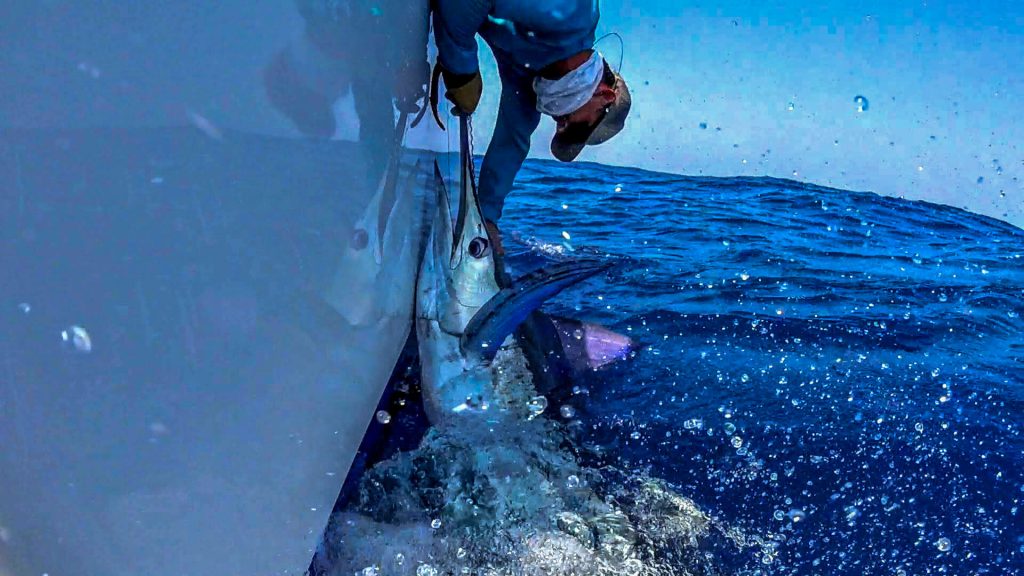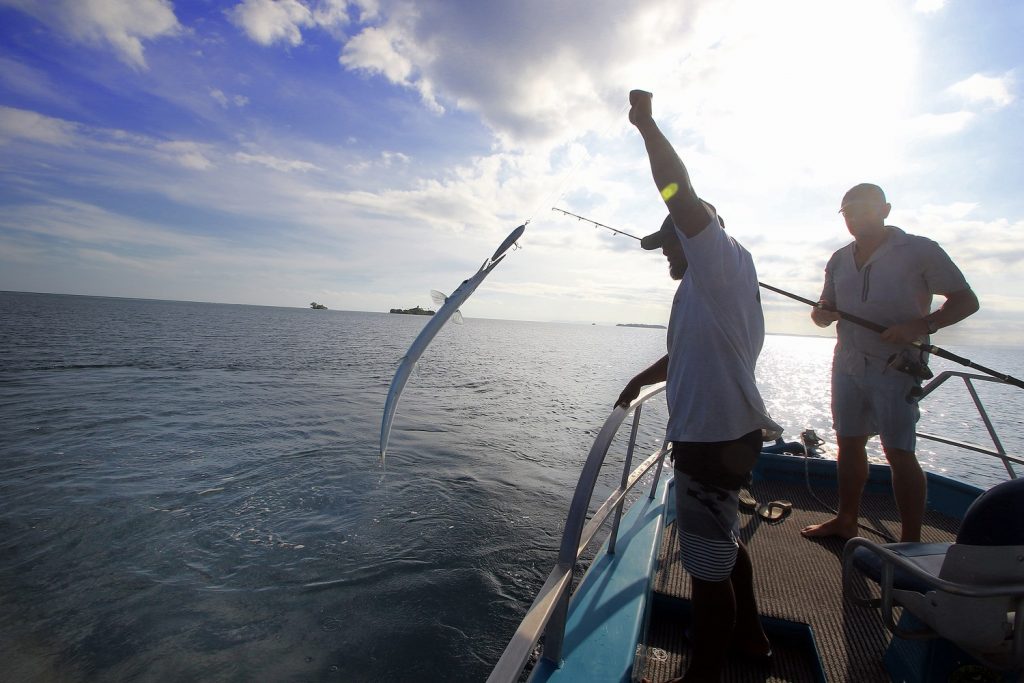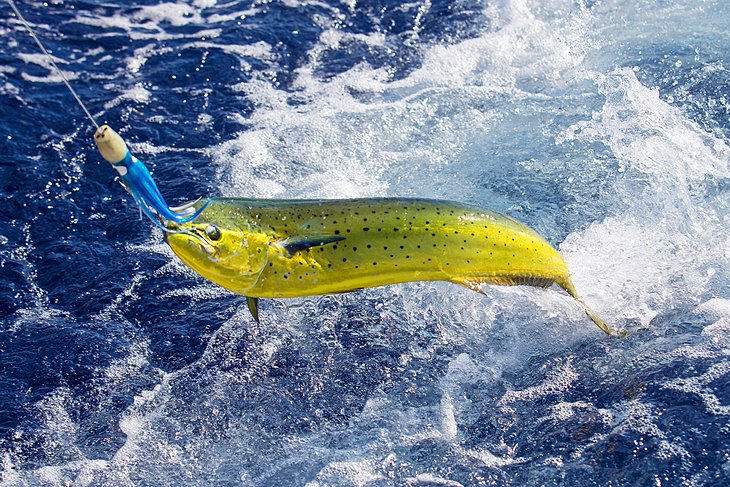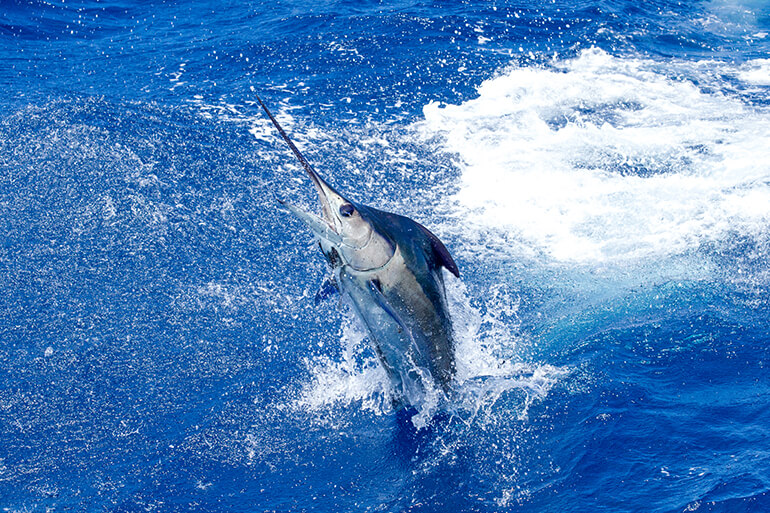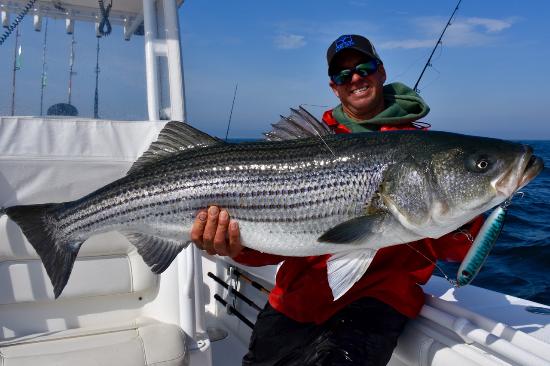Fishing Apparel to Wear While Offshore: The Ultimate Checklist
You are finally getting the family together and you are going on vacation. Great news! Now, you have to figure out what you want to pack.
And you need to figure out what to bring for your day deep sea fishing on a boat that you chartered to take the adults out for a day of adventure fishing. Well, you are already ahead of the game because you are thinking about what to bring offshore before you go, which is great because most people don’t think about what to bring until they are already far out on the ocean, wishing they had the right equipment.
Clothing: What to Wear While Offshore Sportfishing
We heading out into the ocean, like say forty miles offshore into the Gulf Stream off the East Coast of the United States of America, it is super important to remember that the weather can change. And it can change quickly.
Now, you are not going to go on your trip if the weather is not at least somewhat calm, but you have to be ready for a change in conditions. What’s that saying about “the best laid plans?” You want to make sure you are prepared for bad weather, and more likely, you want to make sure that you have the appropriate clothes to keep you comfortable while pulling in the big one.
Most novice anglers don’t realize how long it can take, and how much effort is required, to reel in a large ocean predator.
Because you want to be prepared for a change in the weather, because you are going out on the ocean after all, you need to bring a windbreaker or a lightweight rain jacket, in case it starts raining while you are offshore. Even though most fishing trips are in the summer, it can still be cool when you set off in the pre-dawn morning. When you combine the slight coolness with the wind from the boat underway, it can get downright chilly. A light rain jacket is perfect for these conditions.
You’ll want to make sure you are wearing some light clothing like some of the fishing apparel from Fathom Offshore. Fathom’s gear is designed for sportfishing anglers of all skill levels.
In the summer, out on the ocean, with the sun beating down on you and shade hard to find, it’s no surprise that it gets hot. You need clothes that keep you cool, like t-shirts and shorts.
And make sure you wear light colors like whites or yellows. A common rookie mistake is to wear a black or dark blue shirt. Dark colors keep the warmth in, and this is the exact opposite of what you want. Here is a good article if you want to learn more about why dark colors retain heat more than light colors: https://wonderopolis.org/wonder/why-does-black-absorb-heat
It’s also a smart idea to wear clothes that are made out of breathable materials. This is good because they will wick the moisture off of your skin and keep you dry. This is also good because breathable materials allow you to wear a long sleeve shirt, without dying from heat.
Why would you want to wear a long sleeve shirt in the summertime out on the ocean where it gets really hot? Good question. You want to wear a long sleeve shirt because it keeps the sun off your skin. You’ll be out on the water, with little to no shade for 8-10 hours. During your time on the water you’re basically just cooking your skin. You need to be aware of this and cover as much of your skin as possible to protect yourself from sunburn.
This is why high performance fishing apparel was invented, to keep you protected from the sun, while also keeping you cool. This is achieved with performance fabrics as well as intelligent designs. Most long sleeve performance fishing shirts will have large mesh vests that can be opened and closed usually with a button. This is great because when you’re on the boat and it get super hot, you can open a vent and let heat escape.
These vents are usually located on the back of the shirt, in the armpits, and some have front vents, although front vents are not as common. Another common design is to make it easy to unbutton and rollup the long sleeves, and to snap them off higher up the sleeve so they stay out of the way and don’t fall down.
A hat is also a great article of clothing to bring on your fishing trip. Again, with a hat you will want to follow a similar philosophy as a shirt, you want light breathable materials.
Ideally you’ll want a wide brim that goes all around your head, although most fisherman just use a standard baseball style cap. You can make a baseball cap a little better suited to offshore fishing by finding one that has a mesh top instead of fabric. This way you get to keep the sun off the front of your face, and you allow some heat to escape off your head through the mesh.
And don’t forget to bring along a pair of sunglasses, and ideally you’ll want a pair of polarized sunglasses. Why polarized? Polarized glasses offer many benefits because they reduce glare which is very important when you are staring at the water all day, and they also boost colors which makes it easier to spot fish in the watery depths.
Don’t Forget Sunscreen
Don’t forget to bring sunscreen offshore, even if you are on a really nice boat that has an indoor cabin. You will be spending too much time outside on the deck, in the sun, with the reflection of the sun off the water, to not have sunscreen.
Important places to put sunscreen are under your nose, most people miss this spot, then at the end of the day the bottom of their nose is burning because of the reflection of the water. The same goes with under the bottom lip of your mouth, as well as under your chin, and pretty much you want to cover your whole neck.
The number one place that fisherman forget to put sunscreen is on the top of their feet. Skin cancer on feet is a super common problem among fisherman because nearly everyone forgets to protect the top of their feet.
Water
Now, nearly whomever you hire as a charter to take you out fishing, will have water on the boat, but double check, and bring some of your own just to be sure. Being out on the water, with out any fresh water to drink is a miserable experience.
All you really need to do to bring the right clothes and apparel for a day of deep sea fishing is to plan ahead. Spend some time the day before you go thinking about what you need, and what you should take to make you comfortable on the water. If you wait until the last minute and try to think of this stuff right before you run out the door to meet the boat, you’ll likely forget something important.

